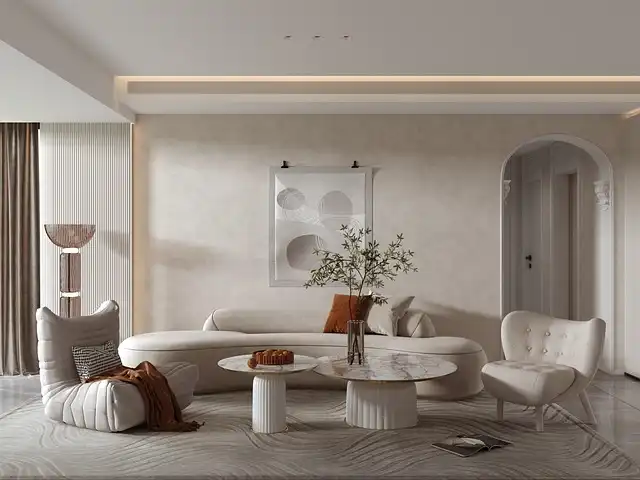Japandi vs. Wabi-Sabi: Kitchen Design Trends

Explore Japandi and Wabi-Sabi kitchen design trends. Japandi blends Japanese minimalism with Scandinavian functionality. Wabi-Sabi embraces imperfection and natural materials. Discover the differences and which style suits you.
Warm wood tones, pared-back colour palettes and tidy lines are all pens of some of the most popular cooking area trends as of late, however you’ll be forgiven if you don’t understand exactly which trend these attributes refer to. Japandi and Wabi-Sabi kitchen area ideas are two of the most significant decoration patterns, favoured for their warm yet straightforward styles, however what are the distinctions between them? In a Japandi cooking area, you’ll find soft, neutral colours, basic kitchen cabinetry, and a mix of black accents and light timbers. After beginning out her trip at Future as an Attributes Editor on Top Ten Reviews, Holly is now a Web content Editor at Suitable Home, creating concerning the really best cooking area and restroom designs and acquires. Prior to this, Holly was apart of the content group at Howdens which stimulated her rate of interest in interior layout, and a lot more especially, kitchens (Shaker is her much-loved!).
‘ It is a look that welcomes patina and tactility, where open shelving and unequal coatings add character and heart,’ Richard includes. ‘Japandi is refined and willful, Wabi-Sabi is softer and more flexible, both create classic kitchens that really feel deeply attached to their environments, just with really various expressions of beauty.’
Open shelving is a much more preferred attribute in a Wabi-Sabi kitchen, stacked packed with everyday cookware and individual memorabilia. The focus is less on tidiness in this space and more concerning producing a lived-in appearance.
‘ Japandi is neat and deliberate, as it blends the minimalism of Japanese insides with the tidy functionality of Scandinavian style. In a Japandi kitchen, you’ll find soft, neutral colours, easy kitchen cabinetry, and a mix of light woods and black accents. Its design principles really feel simple, minimalist and light,’ clarifies Al Bruce, founder of Olive & Barr.
Get in touch with me with news and supplies from various other Future brandsReceive email from us in support of our trusted partners or sponsorsBy sending your details you consent to the Problems & terms and Personal privacy Plan and are aged 16 or over.
After starting out her trip at Future as a Functions Editor ahead 10 Reviews, Holly is now a Web content Editor at Suitable Home, covering the very best bathroom and kitchen designs and buys. At Top Ten Testimonials, she focussed on TikTok viral cleansing hacks as well as just how to take care of financial investment purchases such as mower, washing devices and hoover. Prior to this, Holly was apart of the content team at Howdens which sparked her rate of interest in interior design, and much more especially, kitchen areas (Shaker is her favorite!).
‘ To achieve this look at home, it’s ideal to allow go of excellence. Usage tactile, all-natural products, mix old and new, and enable the room to age beautifully. Welcoming the damage will add that feeling of character you’re trying to accomplish,’ Al includes.
Wabi-Sabi’s Organic Approach
‘ Wabi-Sabi takes a looser, a lot more organic strategy. It commemorates blemish, so you will see weathered woods, stone with all-natural markings, hand-crafted ceramic tiles and freestanding furnishings that really feels accumulated with time,’ describes Richard Davonport.
In a style, cooking area and usefulness are equally as crucial. Creating a space that operates flawlessly in day-to-day life but likewise lines up with your taste will certainly make your cooking area feel like a place you really intend to hang out in. Relaxed, minimal yet cozy and welcoming fads like Japandi and Wabi-Sabi are best for this.
Japandi for Small Kitchens
Japandi style functions well in tiny kitchen areas to enhance the sense of area with brilliant, light interiors and a clutter-free principles. It will motivate a calming method to day-to-day life that is specifically valuable for decompressing after chaotic days.
In the most simplistic sense, Japandi design is a mix of Japanese and Scandinavian influences. Both countries handle the values of very little interiors that make living simple, focusing on feature without completely getting rid of style.
Key Features of Japandi Style
Japandi will function well for those that enjoy extremely contemporary, minimal interior trends but intend to warm up the area up a little. All-white, extremely tidy areas can sometimes look a little medical, so Japandi design will certainly be great at adding some appearance and dimension.
Warm timber tones, pared-back colour schemes and clean lines are all markers of some of one of the most popular kitchen area patterns since late, yet you’ll be forgiven if you don’t know precisely which trend these functions describe. Japandi and Wabi-Sabi kitchen ideas are 2 of the most significant style patterns, favoured for their warm yet straightforward layouts, however what are the differences between them? And which should you take ideas from?
Japandi: Minimalism Meets Functionality
Japandi could be the fad to take on if you’re into the Marie Kondo approach and favour practicality in your designs. Cooking area storage ideas must be well hidden (assume pull-out pantry concepts and back kitchen areas to maintain mess away from simple view) to make sure that worktops are kept clear from clutter.
‘ Japandi blends Japanese minimalism with Scandinavian functionality, favouring clean-lined cabinets, pale timbers and surprise storage space to create a serene, gotten area that feels effortless to stay in. Whatever has its place, and the design is quietly structured to support modern life without aesthetic mess,’ describes Richard Davonport, handling supervisor at Davonport.
1 interior trends2 Japandi
3 kitchen design
4 minimalist garden design
5 Scandinavian
6 Wabi-Sabi
« 70s Lemon Yellow Design Trend: Home Decor & Living Room IdeasTurf Pavers: Eco-Friendly Driveway Solution »
